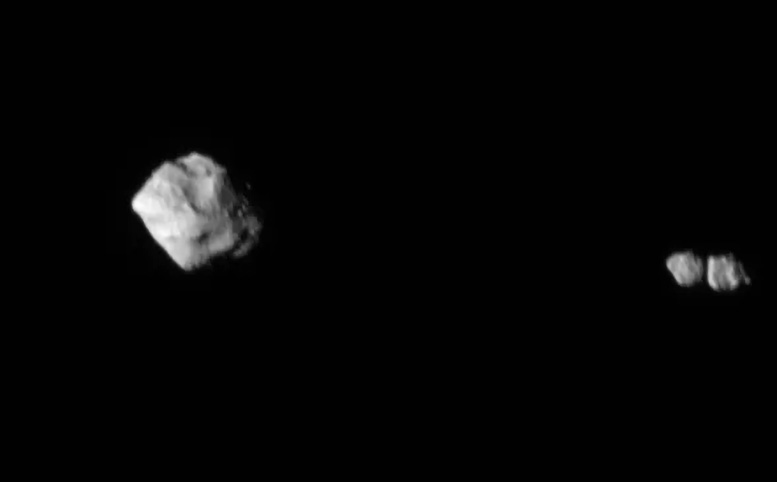
This image shows the asteroid Dinkinesh and its satellite as seen by the Lucy Long-Range Reconnaissance Imager (L’LORRI) as NASA’s Lucy Spacecraft departed the system. This image was taken at 1 p.m. EDT (1700 UTC) on November 1, 2023, about 6 minutes after closest approach, from a range of approximately 1,010 miles (1,630 km). From this perspective, the satellite is revealed to be a contact binary, the first time a contact binary has been seen orbiting another asteroid. Credit: NASA/Goddard/SwRI/Johns Hopkins APL
NASA’s Lucy Surprise Observation of 1st-ever Contact Binary Orbiting Asteroid
It turns out there is more to the “marvelous” asteroid Dinkinesh and its newly discovered satellite than first meets the eye. As NASA’s Lucy spacecraft continued to return data of its first asteroid encounter on November 1, 2023, the team was surprised to discover that Dinkinesh’s unanticipated satellite is, itself, a contact binary – that is, it is made of two smaller objects touching each other.
Initial Observations and Surprises
In the first downlinked images of Dinkinesh and its satellite, which were taken at closest approach, the two lobes of the contact binary happened to lie one behind the other from Lucy’s point of view. Only when the team downlinked additional images, captured in the minutes around the encounter, was the true nature of this object revealed.
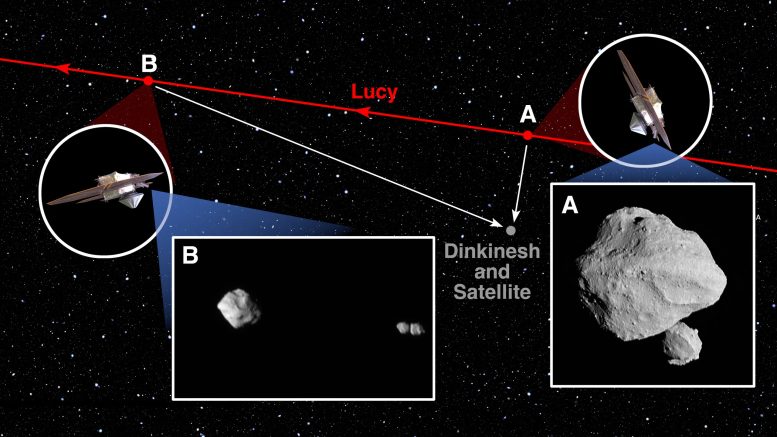
A diagram showing the trajectory of the NASA Lucy spacecraft (red) during its flyby of the asteroid Dinkinesh and its satellite (gray). “A” marks the location of the spacecraft at 12:55 p.m. EDT (1655 UTC) on November 1, 2023, and an inset shows the L’LORRI image captured at that time. “B” marks the spacecraft’s position a few minutes later at 1 p.m. EDT (1700 UTC), and the inset shows the corresponding L’LORRI view at that time. Credit: Overall graphic, NASA/Goddard/SwRI; Inset “A,” NASA/Goddard/SwRI/Johns Hopkins APL/NOIRLab; Inset “B,” NASA/Goddard/SwRI/Johns Hopkins APL
“Contact binaries seem to be fairly common in the solar system,” said John Spencer, Lucy deputy project scientist, of the Boulder, Colorado, branch of the San-Antonio-based Southwest Research Institute. “We haven’t seen many up-close, and we’ve never seen one orbiting another asteroid. We’d been puzzling over odd variations in Dinkinesh’s brightness that we saw on approach, which gave us a hint that Dinkinesh might have a moon of some sort, but we never suspected anything so bizarre!”
Mission Goals and Unexpected Findings
Lucy’s primary goal is to survey the never-before-visited Jupiter Trojan asteroids. This first encounter with a small, main belt asteroid was only added to the mission in January 2023, primarily to serve as an in-flight test of the system that allows the spacecraft to continually track and image its asteroid targets as it flies past at high speed. The excellent performance of that system at Dinkinesh allowed the team to capture multiple perspectives on the system, which enabled the team to better understand the asteroids’ shapes and make this unexpected discovery.
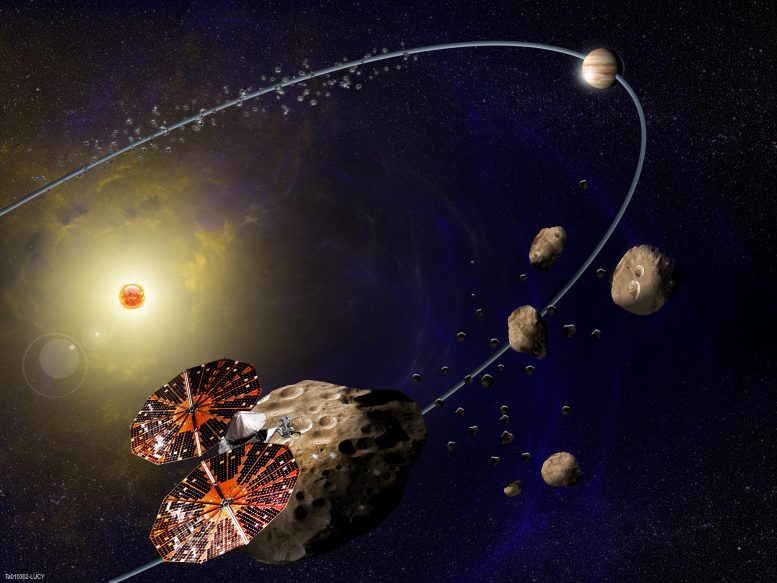
NASA’s Lucy mission, which launched on October 16, 2021, for the first reconnaissance of the Trojans, a population of primitive asteroids orbiting in tandem with Jupiter. In this artist’s concept (not to scale), the Lucy spacecraft is flying by Eurybates, one of the six diverse and scientifically important Trojans to be studied. Credit: Southwest Research Institute
“It is puzzling, to say the least,” said Hal Levison, principal investigator for Lucy, also from Southwest Research Institute. “I would have never expected a system that looks like this. In particular, I don’t understand why the two components of the satellite have similar sizes. This is going to be fun for the scientific community to figure out.”
This second image was taken about 6 minutes after closest approach from a distance of approximately 1,010 miles (1,630 km). The spacecraft traveled around 960 miles (1,500 km) between the two released images.
Continuing the Journey Through Space
“It’s truly marvelous when nature surprises us with a new puzzle,” said Tom Statler, Lucy program scientist from NASA Headquarters in Washington. “Great science pushes us to ask questions that we never knew we needed to ask.”
The team is continuing to downlink and process the remainder of the encounter data from the spacecraft. Dinkinesh and its satellite are the first two of 11 asteroids that Lucy plans to explore over its 12-year journey. After skimming the inner edge of the main asteroid belt, Lucy is now heading back toward Earth for a gravity assist in December 2024. That close flyby will propel the spacecraft back through the main asteroid belt, where it will observe asteroid Donaldjohanson in 2025, and then on to the Trojan asteroids in 2027.
NASA’s Lucy Mission
Lucy’s principal investigator is based out of the Boulder, Colorado, branch of Southwest Research Institute (SwRI), headquartered in San Antonio. NASA’s Goddard Space Flight Center in Greenbelt, Maryland, provides overall mission management, systems engineering, and safety and mission assurance. Lockheed Martin Space in Littleton, Colorado, built and operates the spacecraft. Lucy is the 13th mission in NASA’s Discovery Program. NASA’s Marshall Space Flight Center in Huntsville, Alabama, manages the Discovery Program for the Science Mission Directorate at NASA Headquarters in Washington.

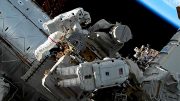

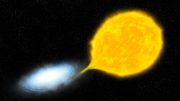

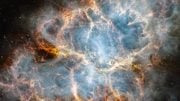
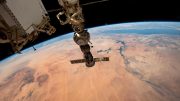
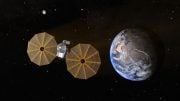
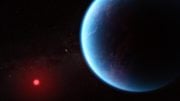
Got to say perspective from different angles can reveal